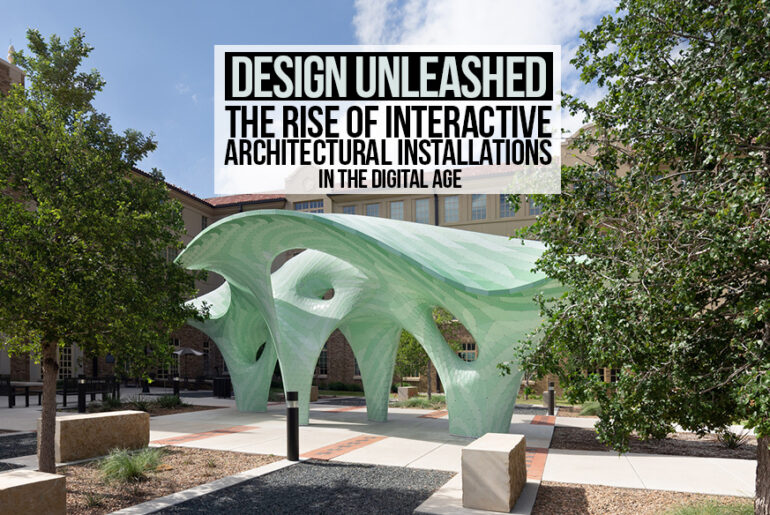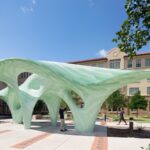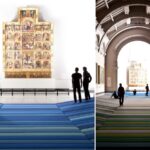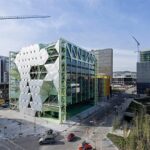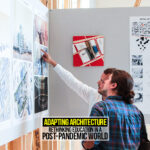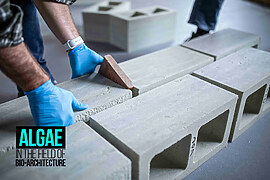A significant change is taking place in the rapidly developing field of modern architecture, one that goes beyond the boundaries of conventional construction and embraces the idea of public accessibility. Immersion architecture experiences are not limited to the inside of buildings; they extend into the public sphere and encourage people to become involved in the story. Visualize a structure or installation acting as a dream weaver, creating dreams not only for itself but also for the people who interact with it. This mutually beneficial relationship that exists between architecture and its users inspires us to investigate not just what a building is but also what it might dream of.
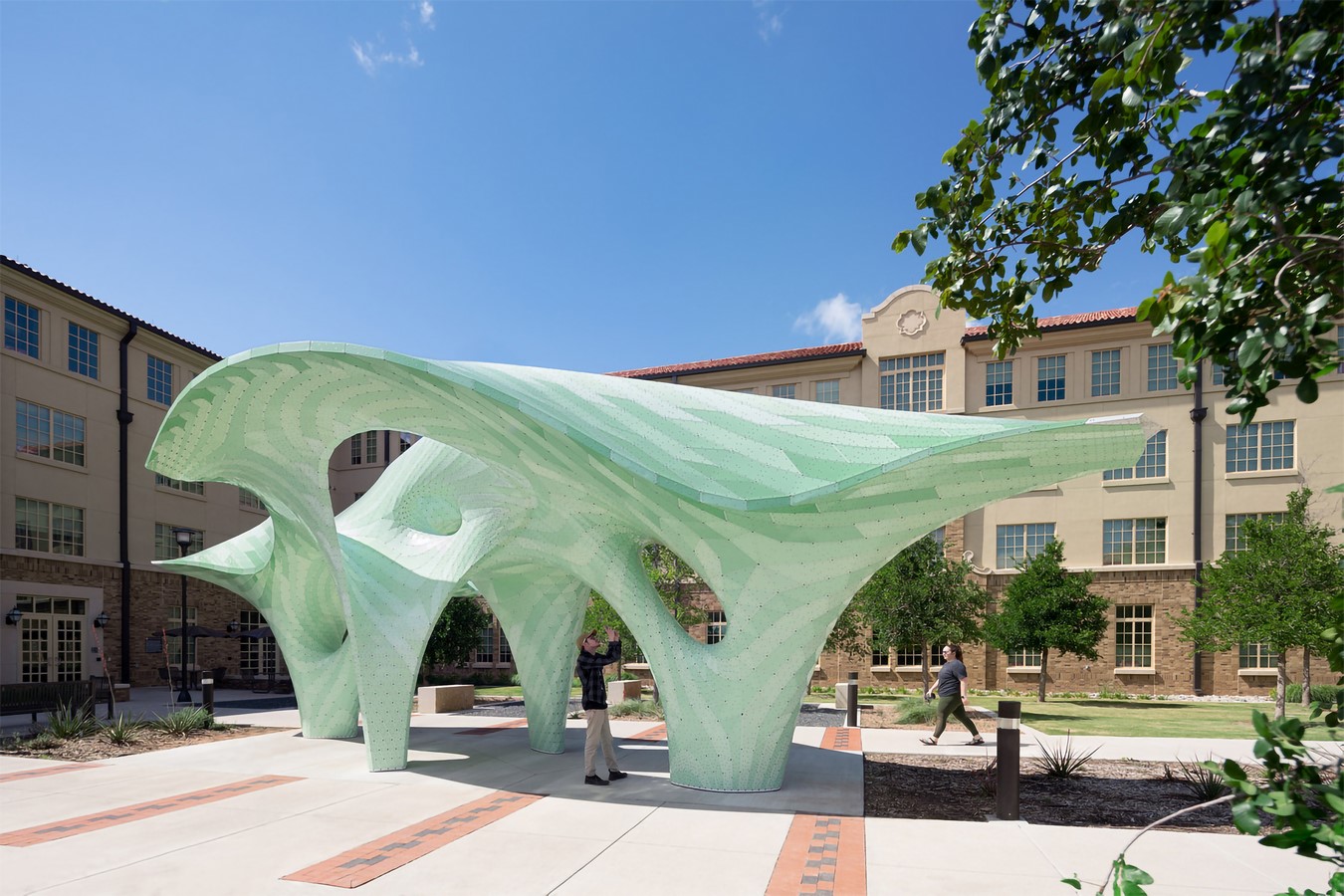
The Wave Pavilion by Marc Fornes & THEVERYMANY (USA):
The Wave Pavilion is an example of how technology, architecture, and art can coexist. Its goal is to produce an immersive experience that makes it difficult to distinguish between interactions between people and the built environment. The Wave Pavilion’s complex, flowing design is visually arresting, evoking an organic, futuristic shape. Sunlight can pass through the use of perforated materials, creating captivating patterns on the ground. The pavilion’s motion sensors allow it to react to visitors’ movements dynamically. The way people move through the room alters the way light and shadow interact, giving the place a breathing, living quality.
With an ever-changing visual symphony that reflects the energy of its occupants, the Wave Pavilion explores the idea that architecture can be a responsive and interactive extension of human expression.
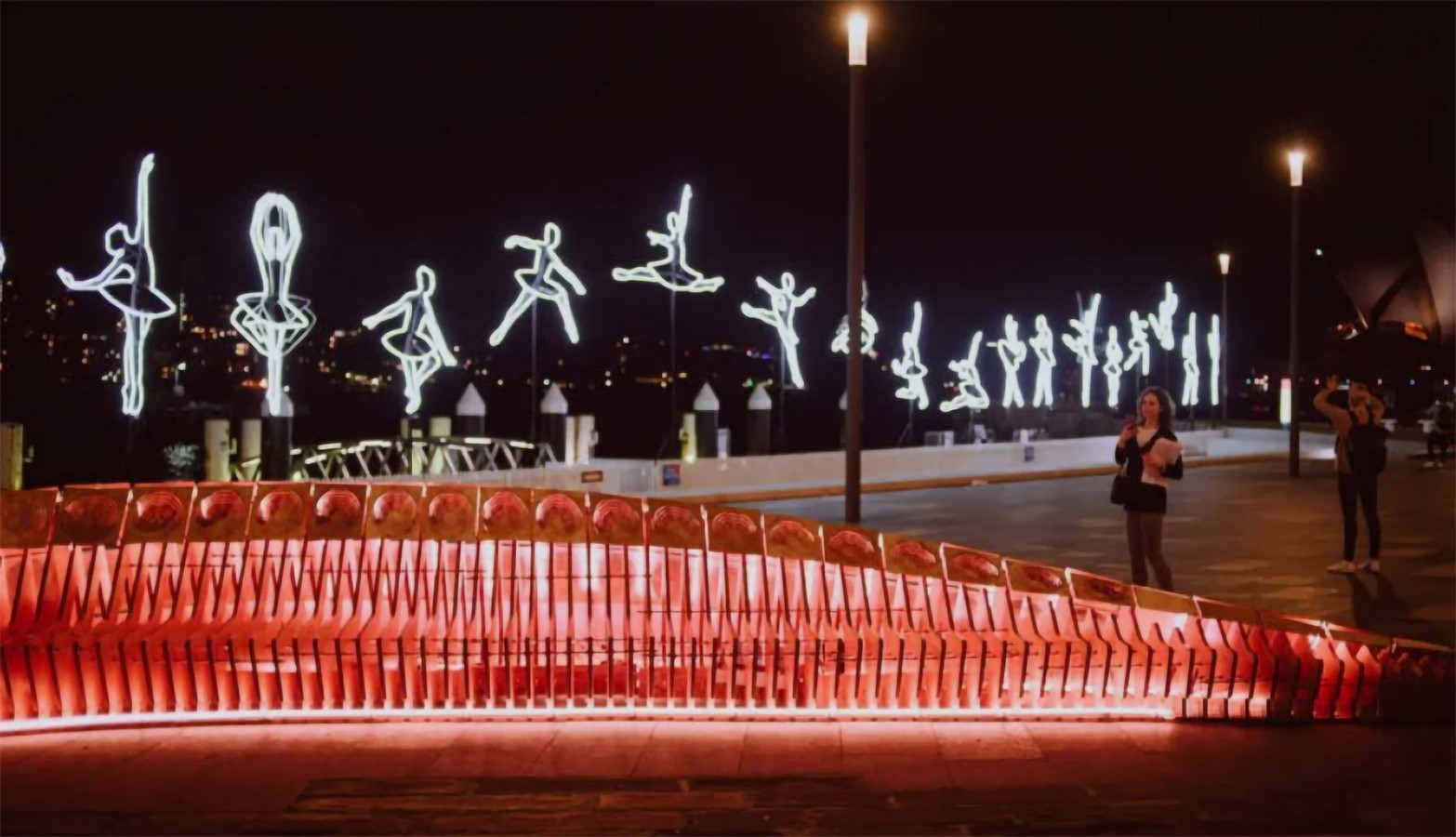
SparkScape by UNStudio (Netherlands)
The goal of SparkScape is to transform urban areas by adding dynamic, interactive components to them. Its purpose is to encourage community engagement and transform ordinary public areas into lively, participatory environments. The luminous trails formed by the LED panels embedded in the pavement produce an enthralling visual spectacle as they follow pedestrian footfall. Both the practicality and the beauty of the installation blend in perfectly with the city environment. SparkScape uses sensors that react to people’s movements to identify foot traffic. The sidewalk becomes an interactive canvas as people walk along it because the LED panels light up and create a temporary, glowing trail.
The concept of SparkScape suggests that urban settings can be dynamic and adaptable, enabling people to actively influence and add to the visual identity of their city’s streets.
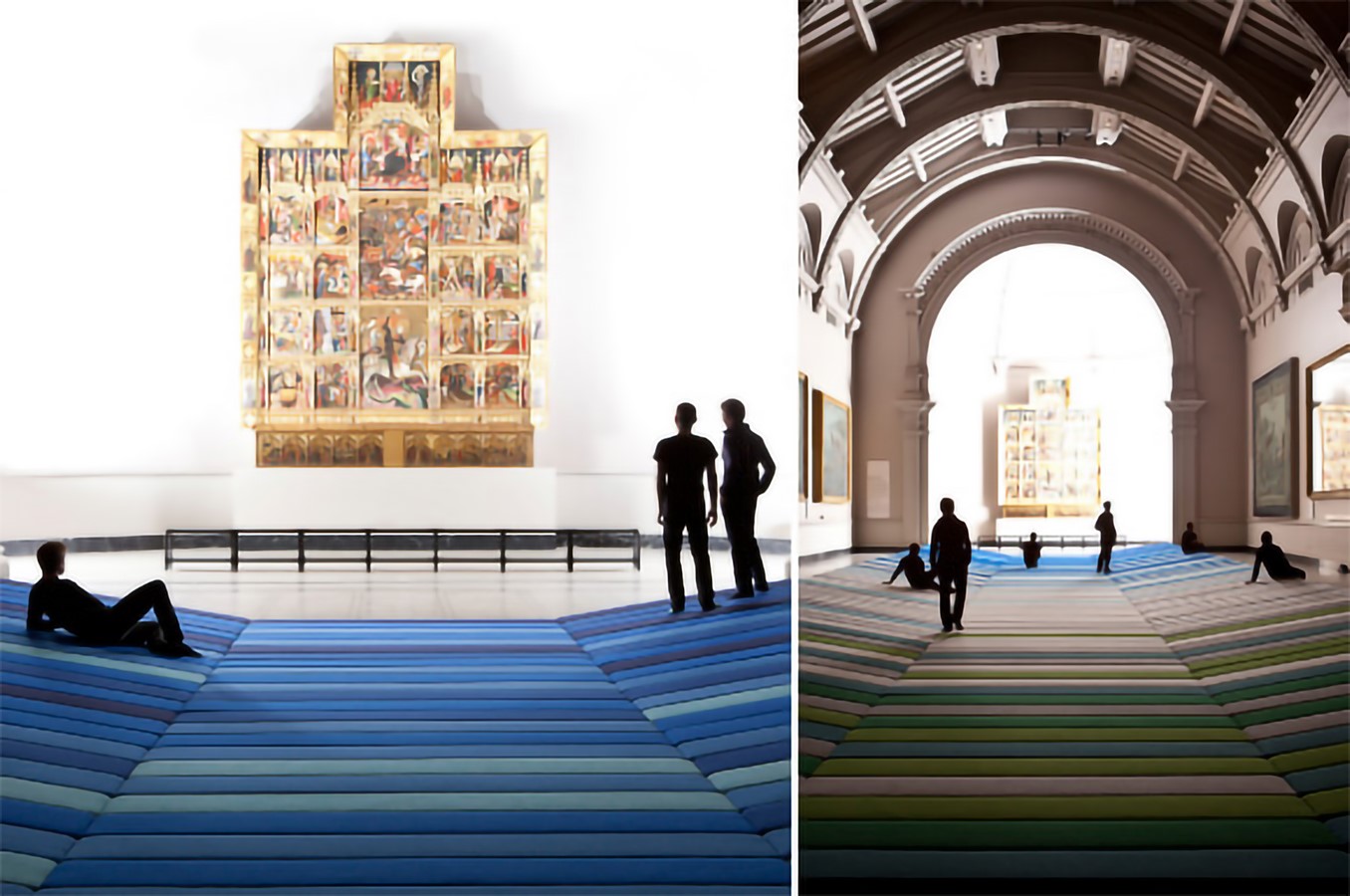
Textile Field by Ronan and Erwan Bouroullec (France)
Textile Field questions conventional ideas about how people should sit and organize their space. Its goal is to give users an adaptable and interactive space where they can interact with the installation to design custom seating arrangements. Textile Field’s soft, angular foam modules have a welcoming, visual appeal. The vibrant colors and modular design encourage playful interaction, transforming the space into a dynamic and comfortable seating area. The foam modules can be rearranged by guests to create custom seating configurations. Users are encouraged to be creative and feel a sense of ownership by the installation’s tactile and collaborative elements.
Textile Field encourages people to collaboratively reshape and personalize their surroundings, promoting the idea that public spaces can be flexible and user-driven.
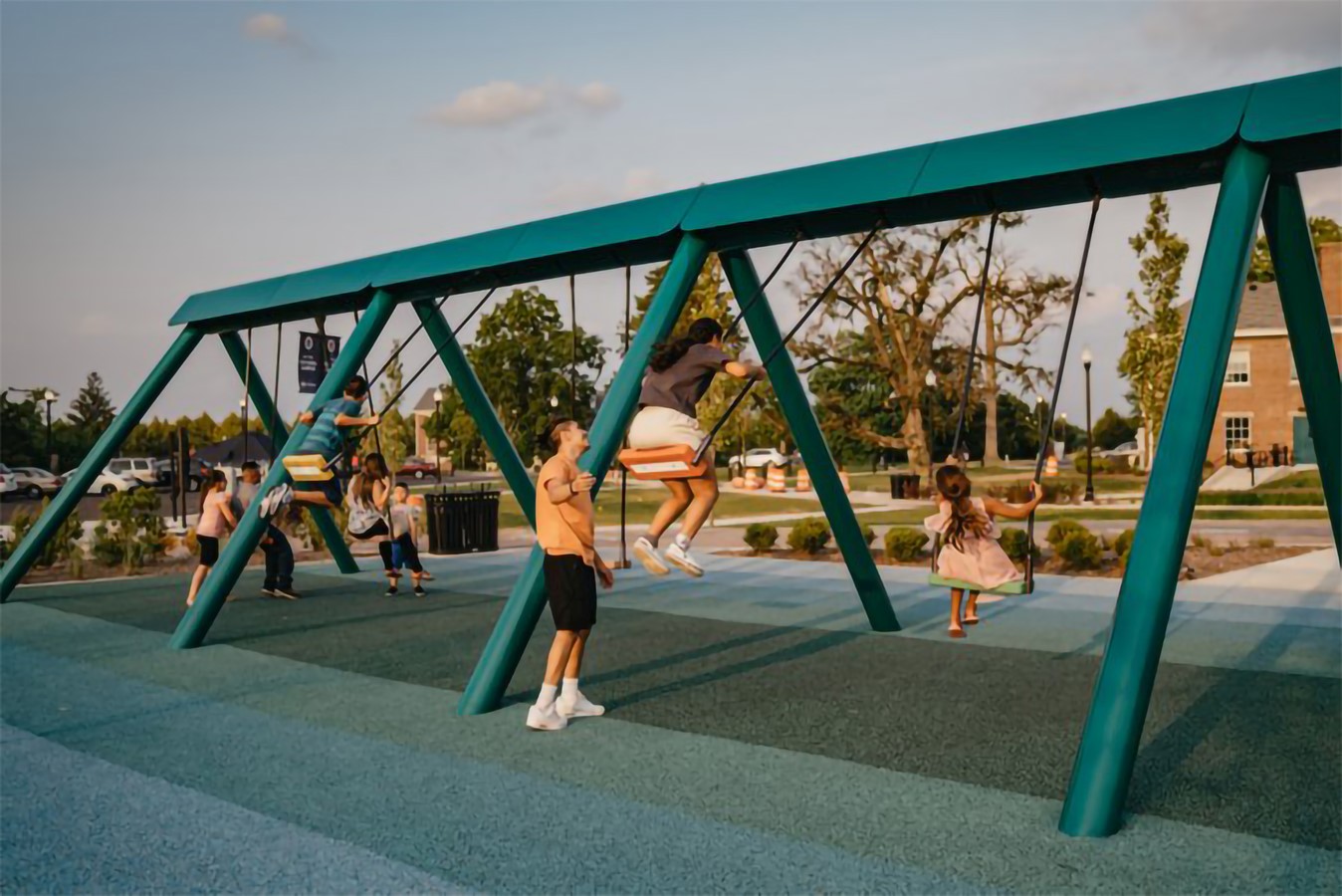
The Musical Swings by Daily tous les jours (Canada)
The Musical Swings want to make the public area happy and engaging. They aim to create a communal musical performance out of a well-known childhood activity, drawing people into a shared and harmonious experience. Although the swings are visually appealing in and of themselves, their combined symphony is what truly makes them beautiful. A novel twist is added when technology is incorporated into a well-known play element. The swings are equipped with speakers and sensors, which produce melodic notes when users swing. Participants work together to create a melodic arrangement that transforms swinging into a collaborative and artistic musical activity.
The Musical Swings promotes the idea that shared creativity can turn even routine, everyday tasks into enjoyable group activities that strengthen a sense of community.
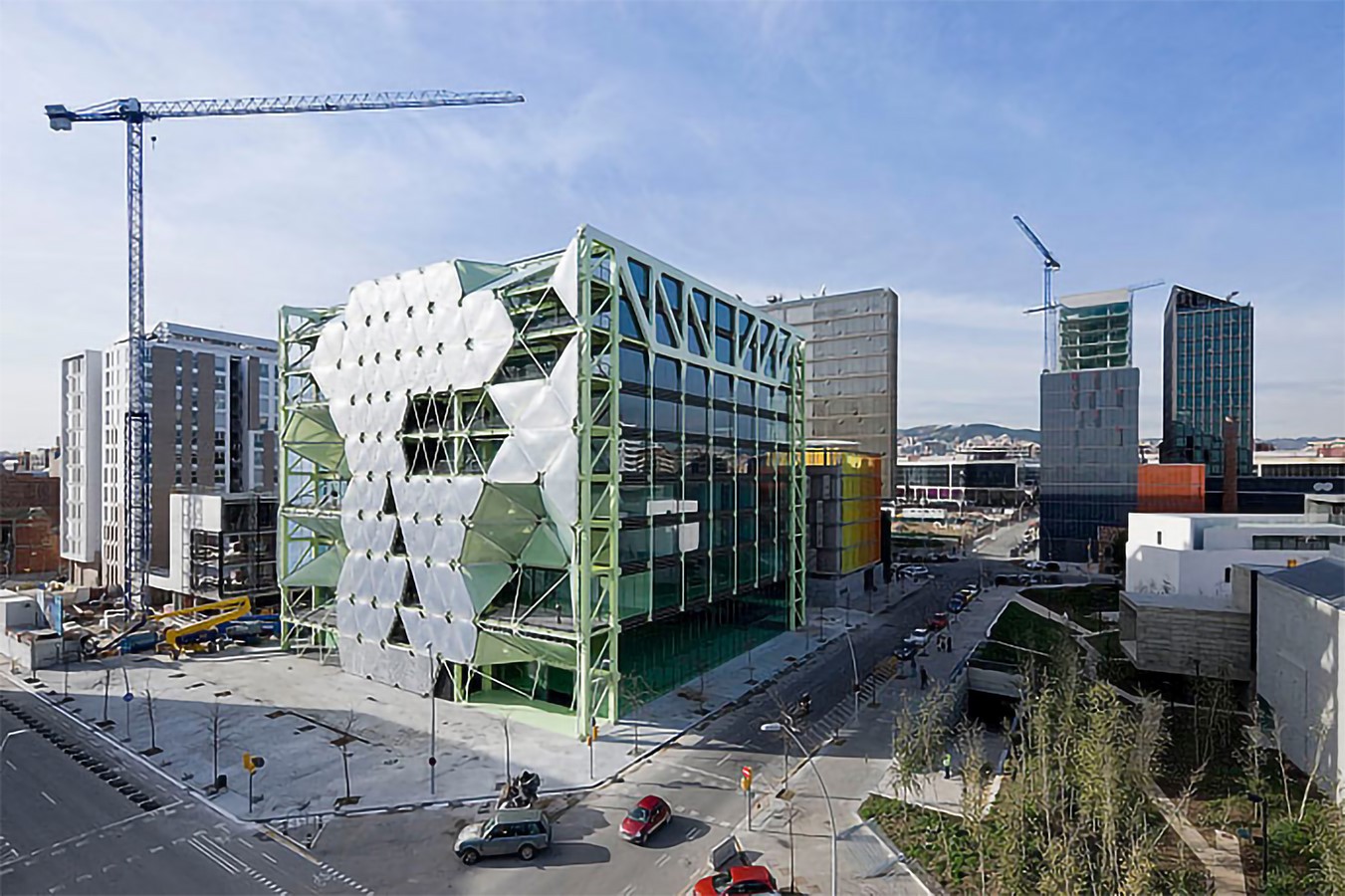
Pixel Facade at Media-ICT Building by Cloud 9 Architects (Spain)
The Media-ICT Building’s visual aesthetics are enhanced by the dynamic and interactive display of the Pixel Facade. Its goal is to use pixelated graphics to engage the public and dynamically reflect the identity of the building. The building gains a modern and futuristic visual layer from the LED pixel facade. The building’s capacity to display dynamic patterns, images, and data sets it apart from other urban features. LED lights that are programmed react to both user interactions and the surrounding environment. The facade turns into a canvas for digital art, showcasing a variety of images that are dynamic and subject to change in response to user input or outside influences.
The Pixel Facade adds a level of interactivity to the building’s identity by communicating the idea that architecture can embrace digital elements to become a canvas for dynamic, ever-changing expressions.
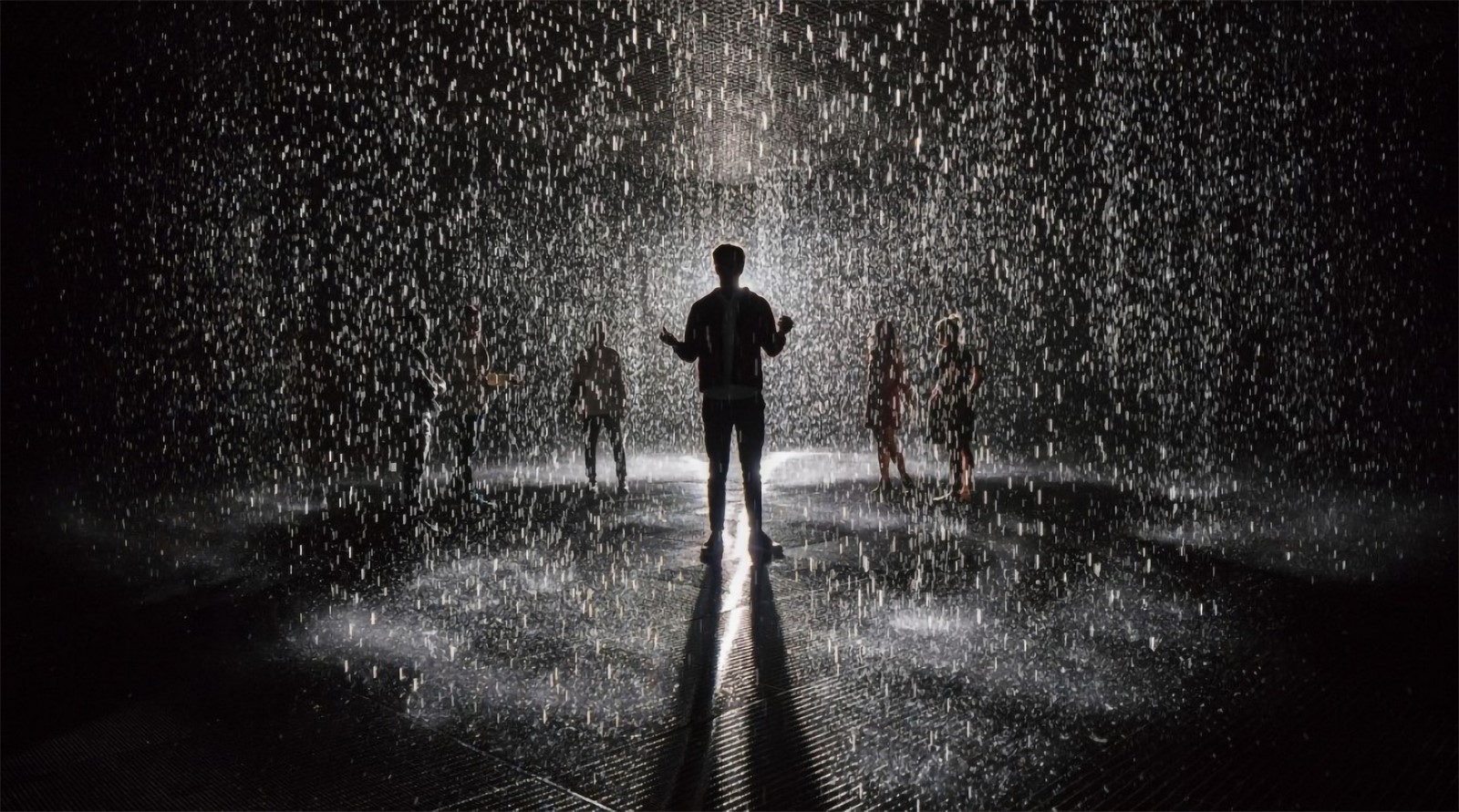
Rain Room by Random International (Various Locations)
Participants can interact with simulated rainfall in the immersive and surreal Rain Room experience. Its goal is to produce a singular, sensory experience with weather elements while challenging preconceptions about the natural world. Rain falling all around participants while they stay dry creates a visually arresting and thought-provoking spectacle. A captivating and unforgettable experience is produced when technology and nature come together. When people are identified by sensors, the rain stops around them. Visitors can move through the rain without getting wet thanks to this interactive mechanism, which creates a captivating interaction between the human body and the simulated weather.
The concept conveyed by Rain Room is that technology has the power to alter and reimagine our sensory encounters with the natural world, encouraging reflection on the relationship between technology, nature, and human interaction.
Architectural Dreaming
Within the domain of architectural Dreaming, structures and artworks surpass their immobile state. They envision lively conversations and interactive light, sound, and tactile interactions with the general public. This collective dreaming, where the architecture becomes a storyteller, transforms spaces into living, breathing entities that echo the aspirations and emotions of those who encounter them.
The question of what inspires people to stop, look, and think is a significant one. The human need for connection and the extraordinary appeal of experiences that go beyond the ordinary hold the key to the solution. Immersion architectural installations offer a canvas on which people can leave their memories, feelings, and creative imprints. They are more than just buildings; they are captivating stories that capture the imagination.
The idea of a “canvas” changes profoundly as the lines separating architecture and audience become hazier. A canvas in an immersive experience is no longer limited to a two-dimensional surface; it now encompasses the entire built environment in three dimensions. People become the artists and architecture the canvas, collaborating to create a dynamic, ever-evolving work of art.
Architecture visualization is essential to this paradigm change. As immersive experiences redefine the fundamentals of architectural storytelling, our perception of a canvas changes. The canvas is no longer static; it breathes, reacts, and evolves in real time. Architecture transforms into a visual symphony that entices people to engage in a multisensory experience that modifies their understanding of form and space. Once a passive backdrop, the canvas becomes an interactive stage where the audience participates in a mutual dance of perception and creation with the architecture.
Conclusion
Interactive installations are colorful threads that entwine creativity, technology, and human interaction in the architectural evolution tapestry. Alchemists, these designers of immersive experiences, turn the ordinary into the extraordinary. Every installation, whether it be The Wave Pavilion’s fluid dynamics, SparkScape’s glowing trails, The Textile Tapestry’s tactile exploration, The Sonic Canopy’s melodic sounds, or XYZ Studios’ pixelated canvases, is proof of the never-ending potential of architectural innovation.
Architects today are creating experiences that speak to the soul rather than just creating buildings as we navigate the digital era. The interactive installations that are featured here are more than just static components; they are dynamic stories that the audience and architects alike have contributed to. The stage is set for a future where every space becomes a canvas, ready to be animated by the touch and creativity of those who inhabit it, in this symphony of architecture and interaction. A new era of architectural storytelling has begun with the advent of the digital age, in which buildings can communicate, listen, respond, and dance to the beat of human interaction.
References:
(2023) Random International. Available at: https://www.random-international.com/rain-room-2012 (Accessed: 22 January 2024).
(2015) MARC FORNES & THEVERYMANYTM. Available at: https://theverymany.wordpress.com/about/ (Accessed: 25 January 2024).
Jdd and Cam (2014) The swings par daily tous Les Jours, Journal du Design. Available at: https://www.journal-du-design.fr/design/the-swings-daily-les-jours-48328/ (Accessed: 21 January 2024).
Lane, M. (2023) A conversation with Refik Anadol on creativity and ai, Google. Available at: https://blog.google/technology/ai/artist-refik-anadol-ai-creativity-google/ (Accessed: 22 January 2024).
solarfacades4architects (2012) Media – ICT Building by cloud 9, Solar Facades + Architects. Available at: https://solarfacades4architects.wordpress.com/2012/08/22/media-ict-building-by-cloud-9/ (Accessed: 22 January 2024).
www.notdefined.net, A.B.- (2023) Ronan & Erwan Bouroullec Design. Available at: https://www.bouroullec.com/ (Accessed: 21 January 2024).


